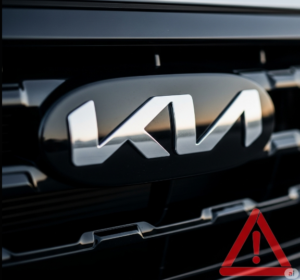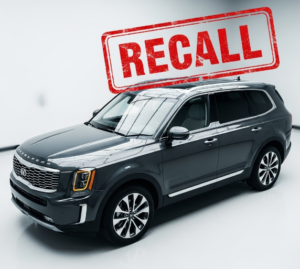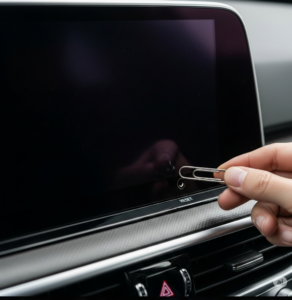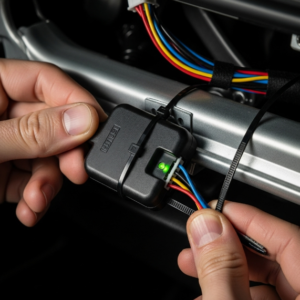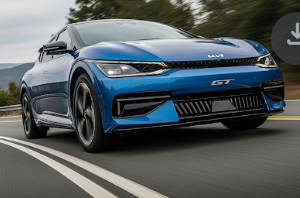Kia Telluride common problems are an important consideration for anyone looking to buy this popular mid-size SUV. While the Telluride has won numerous awards and is a highly sought-after vehicle for its luxurious features, spacious interior, and stylish design, it isn’t without its flaws. Whether you’re a prospective buyer doing pre-purchase research or a current owner troubleshooting an issue, understanding these potential problems is essential for making an informed decision.
This comprehensive guide will walk you through the most frequently reported issues, from minor annoyances to significant safety concerns. Our goal is to provide you with clear, credible, and detailed information so you can make an informed decision and be a well-prepared owner.
Known Mechanical Issues
While the Telluride’s 3.8-liter V6 engine is generally reliable, some owners have reported issues related to the powertrain and other mechanical components.
1. Kia Telluride Transmission Problems
Some owners of early model year Tellurides have reported problems with the 8-speed automatic transmission.
- Symptoms: You may experience delayed shifting, rough or jerky gear changes, or a general feeling of the transmission “slipping.” This is most often reported at lower speeds or during cold starts.
- What to do: If you notice these symptoms, have a qualified technician or your Kia dealer inspect the vehicle. In some cases, a simple software update or a transmission fluid flush may resolve the issue. If the problem is more severe, it could require more extensive repairs.
2. Suspension and Axle Issues
There have been complaints regarding suspension noise, particularly from the rear of the vehicle.
- Symptoms: Owners have reported a knocking or clunking noise from the rear self-leveling shocks, especially over bumps.
- What to do: Kia has issued a Technical Service Bulletin (TSB) to address this. The fix often involves replacing the upper insulator near the rear wheel well. Some 2020-2024 models have also had issues with the intermediate shaft and driveshaft not being fully engaged, which can lead to a risk of the vehicle rolling away while in park. A recall was issued for this, and dealers will update the electronic parking brake software and replace any damaged components.
Recalls and Safety Concerns
Perhaps the most critical information for both potential and current owners relates to the safety recalls issued by the National Highway Traffic Safety Administration (NHTSA). These are not isolated incidents but problems Kia has officially recognized as safety risks.
The Official Kia Telluride Recall List
The Kia Telluride has had several recalls over the years. It is crucial to check if your vehicle’s VIN is affected by any of these.
- Front Power Seat Fire Risk: A significant recall affecting certain 2020-2024 models was issued for a fire risk in the front power seat motor. A stuck power seat slide knob could cause the motor to overheat and potentially start a fire. Owners are advised to park their vehicles outside and away from structures until the repair is completed.
- Tow Hitch Fire Hazard: Another recall was issued for a fire risk associated with the tow hitch harness on certain models. Debris and moisture could build up on the circuit board, leading to an electrical short and potential fire.
- Vehicle Rollaway Risk: A separate recall was issued for a driveshaft issue that could cause the vehicle to roll away while in park, even with the parking brake engaged.
Brake Issues & Class Action Lawsuits
A class-action lawsuit has been filed concerning potential brake issues in 2020-2024 Telluride models.
- Symptoms: Drivers have reported a “spongy” or soft brake pedal that can lose pressure, making it difficult to stop the vehicle. This is believed to be caused by a defect in the master cylinder.
- What to do: This is a serious safety concern. If you experience these symptoms, contact your dealer immediately and do not wait for a recall.
Common Electrical and Infotainment Glitches
The Telluride’s high-tech interior is a major selling point, but it’s not immune to software and electrical issues.
Kia Telluride Infotainment System Not Working
The large infotainment screen and digital instrument cluster have been the source of some complaints.
- Symptoms: Reported issues include a blank screen, freezing, lagging, or a complete loss of power to the system.
- What to do: Often, a simple “soft reset” can resolve the problem. Look for a small pinhole on the system’s faceplate and use a paperclip to press the reset button. If the problem persists, a visit to the dealer for a software update or a hardware inspection may be necessary.
Other Electrical Gremlins
Beyond the infotainment system, some owners have dealt with other electrical issues, such as faulty interior lights, malfunctioning sensors, or a battery that drains unexpectedly. These can often be a sign of a deeper electrical short or a defective component.
Is the Kia Telluride Reliable? A Fair Assessment
After looking at these potential issues, you might be asking yourself, “Is the Kia Telluride reliable?” The answer, in short, is yes, but with a few caveats.
On a macro level, the Kia Telluride has a strong reputation for dependability. It has received high scores from major reviewers like J.D. Power and is often praised for its robust engine and overall build quality. Most owners do not experience these severe problems. However, the issues and recalls listed above are not uncommon, especially in the earlier 2020 and 2021 model years.
For potential buyers, this means you should not be deterred, but you must be an educated consumer. For current owners, it means being proactive about maintenance and staying on top of any recalls.
Tips for Current and Prospective Owners
- For Prospective Buyers:
- Thoroughly research the specific model year you are considering. The 2022 and later models have generally fewer reported issues.
- Run the VIN of any used vehicle you’re looking at through the NHTSA recall lookup tool to ensure all recall-related repairs have been performed.
- Get a pre-purchase inspection from an independent mechanic who specializes in Kia vehicles.
- For Current Owners:
- Stay informed about new recalls and TSBs by checking the NHTSA website or your Kia owner’s portal.
- Pay attention to any new noises, lights, or unusual behavior from your vehicle. Don’t ignore a potential symptom.
- Follow your vehicle’s recommended maintenance schedule to the letter, especially regarding fluid changes and inspections.
Frequently Asked Questions:Kia Telluride Common Problems
How much does it cost to fix common Kia Telluride problems?
The cost varies widely depending on the issue. A simple software update for the infotainment system or a recall-related repair will be free under warranty or as part of the recall. However, out-of-warranty transmission work could cost thousands of dollars, and even smaller repairs like a new sensor can run a few hundred dollars.
What are the most reliable model years for the Kia Telluride?
While the 2020 and 2021 models have a reputation for having the most issues, the 2022 and newer models have generally been more reliable as Kia has worked to fix early-production bugs. Still, it’s essential to check for recalls on any model year you are considering.
Does a long warranty cover these problems?
Kia’s industry-leading 10-year/100,000-mile powertrain warranty is a significant benefit. Many of the more severe mechanical issues, like transmission problems, could be covered under this warranty if they occur within the specified time and mileage limits. However, not all issues will be covered, so always confirm with your dealer.
